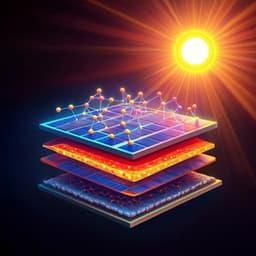
Engineering and Technology
Flexible and efficient perovskite quantum dot solar cells via hybrid interfacial architecture
L. Hu, Q. Zhao, et al.
Discover how the innovative hybrid interfacial architecture using CsPbI3 perovskite quantum dots and PCBM heterojunctions has achieved remarkable solar cell efficiencies. This groundbreaking research showcases the potential for flexible quantum dot photovoltaics, led by esteemed authors including Long Hu, Qian Zhao, and Anita W. Y. Ho-Baillie.
~3 min • Beginner • English
Related Publications
Explore these studies to deepen your understanding of the subject.







